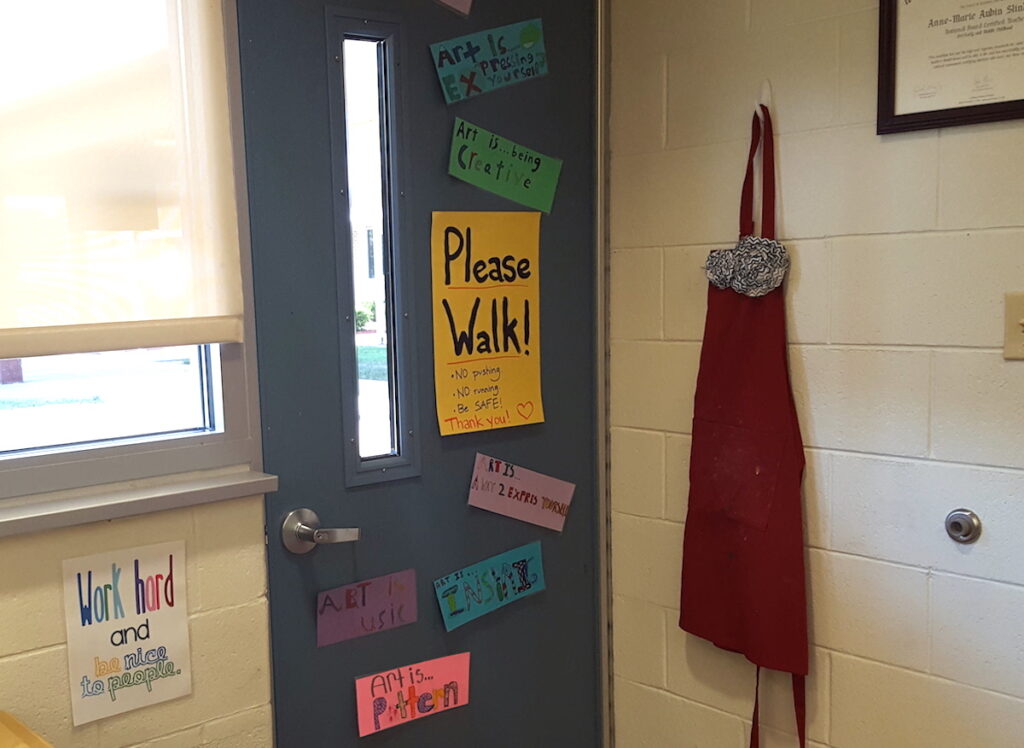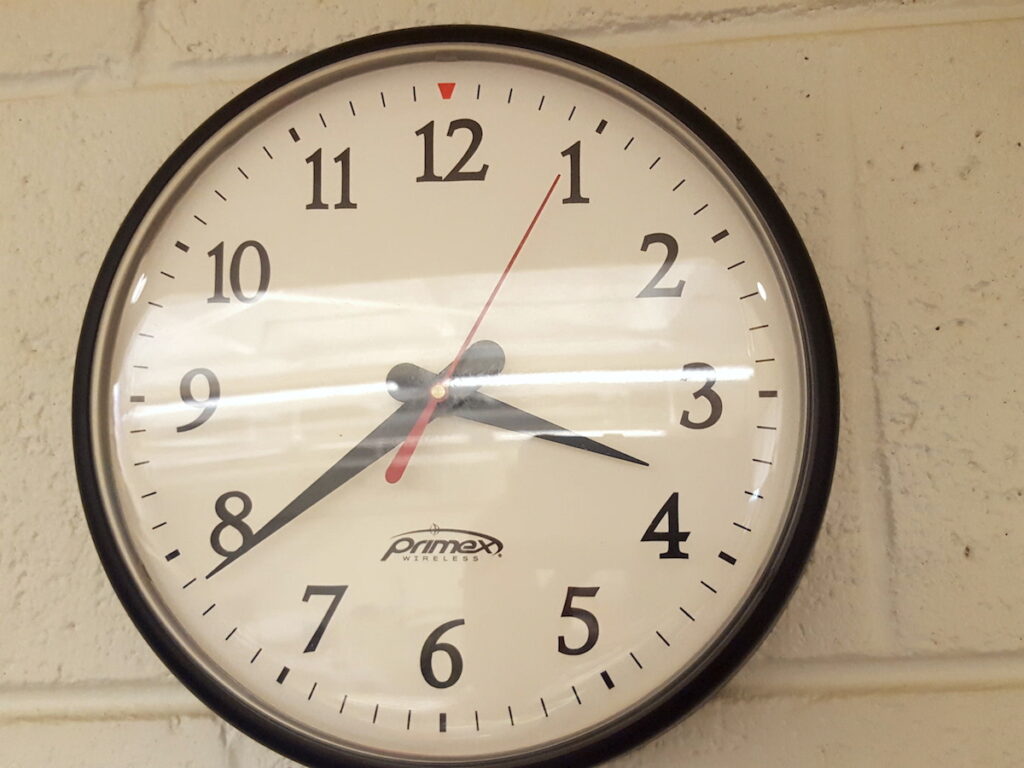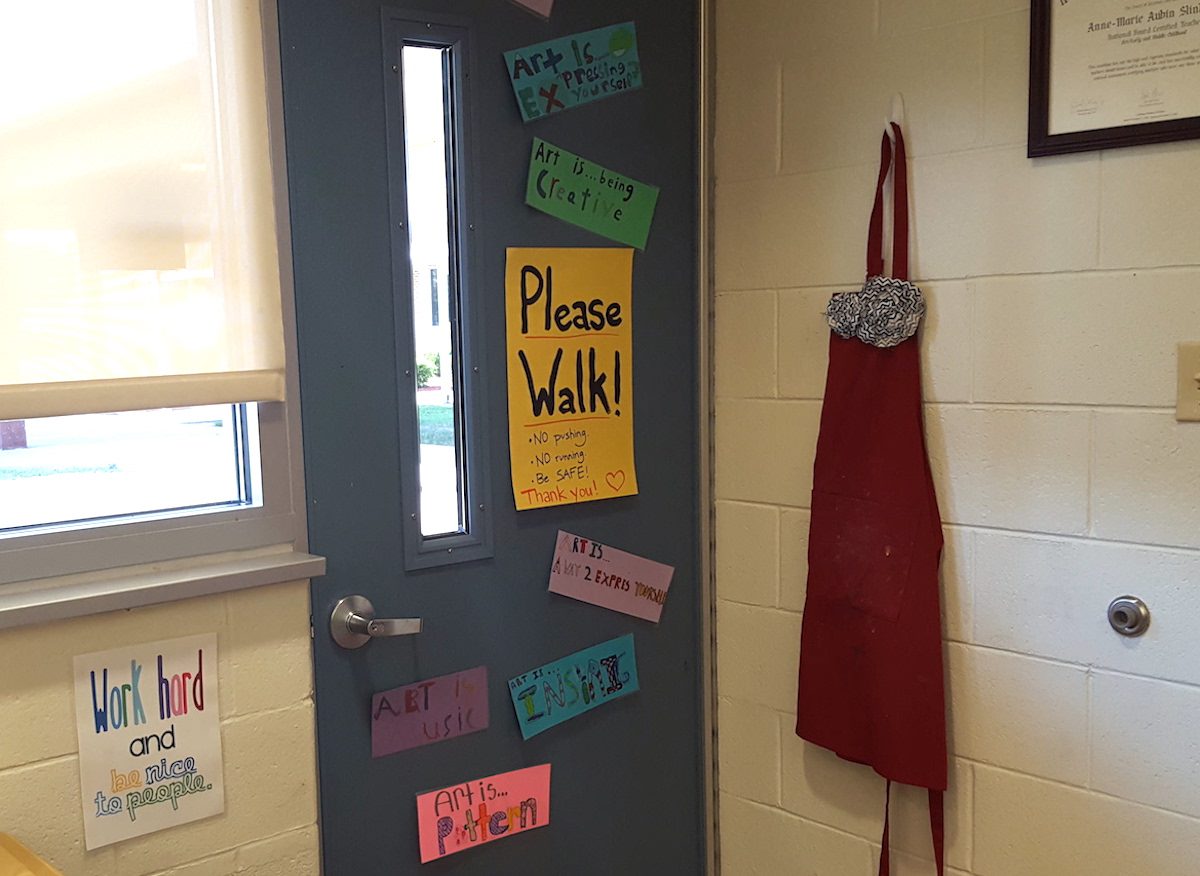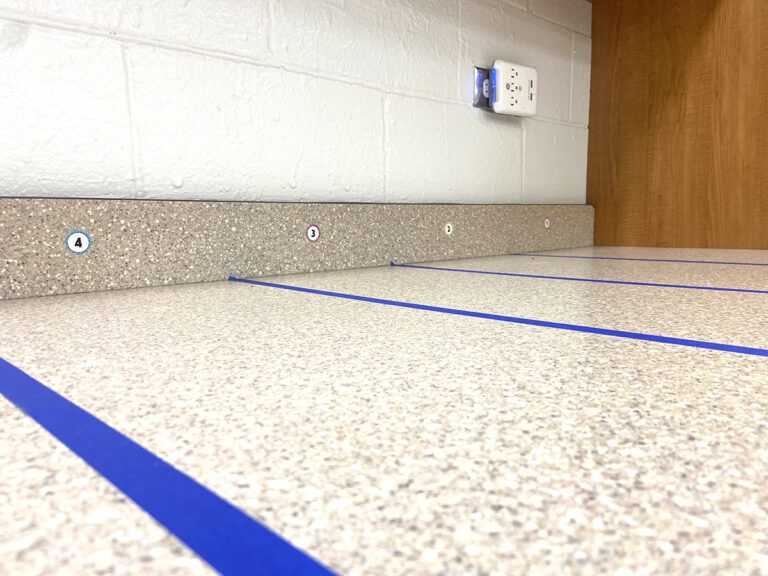Imagine you’ve just completed a great day of painting with your elementary students. They worked hard creating beautiful pieces. They were focused and listened for the entire class period. You timed out cleanup time perfectly, and now they are finished and ready to line up. You’re feeling confident and in control.
You tell the class to line up. Suddenly, the entire class runs for the door, pushing to be first and arguing about who is the line leader. There is no line, but rather a mass of students blocking the door. Your quiet, calm, and perfectly composed class is now in chaos, just in time for their teacher to show up at the door to pick them up. Your confidence leaves with the students. You wonder to yourself, “What did I do wrong?”
Most elementary art teachers have experienced a scene like this at least once. My first year teaching was filled with similar situations in which order devolved into total chaos in the blink of an eye. Over time, I developed several successful strategies to help me line up students quickly and calmly.
Here are 4 easy tips to help you line up elementary students with ease.

1. Teach through it.
I meet with each of my classes for only 40 minutes, once a week. That’s a very small amount of time to teach a lesson, allow students time to create, clean up, and have time for closure. Because of this time challenge, I often will combine my closure activity with my line-up routine. For example, I may ask the class a series of questions relating to the lesson. When I call on a table, they have the chance to share their response to the question with the class, and then line up. This keeps the students engaged as they find their place in line.
2. Blend it into your cleanup routine.
Elementary students want to be first to line up. This enduring desire is one of the few things you can rely on with young students. I know students will work hard to be in the front of the line. Because of this, I often allow tables to earn the prize of being first in line if they are cleaned up and ready first. This little tip can help to speed up cleanup time as well and keeps the kids on track so you can be sure to have a bit of time for closure too.
3. Make it a game.
What do you do when the class is in line, but the teacher is late? Even the most orderly and compliant group of children will start to become antsy after a minute or two. In these situations, when I am not sure how much time I have, I pull out a game.
My youngest students love to play Simon Says. My older students, though, are not at all into it. For these students, the “Quiet Game” is pure gold. I use this with first through fifth grades. I pick one or two students to begin. These students look at the line and choose a student who is standing quietly. That’s all there is to it. They just need to be quiet to be chosen. Once the student has made their choice, they return to their place in line and the chosen student takes a turn finding a quiet classmate. This game can occupy a class for several minutes. It works so well that I can move around the classroom setting up for my next class as the students play the game. Every class I have done this with has loved it.

4. Wait.
Lining students up before they are quiet and paying attention is a mistake many teachers make. I know I was guilty of this a lot early in my career! By waiting for silence and attention, you are communicating your expectations. This seems so obvious, but sometimes just waiting can feel counter-intuitive. When the class is silent, then you can release them by table to the line. Remember to wait for silence between each table group, to make sure they understand you still expect them to be quiet.
I’m embarrassed to say it took me a long time to streamline my routines for lining up students. The classroom teachers who came to pick up their classes from art early in my career must have thought I had no control in my classroom! I eventually learned the lesson isn’t complete until the students leave the room. These simple strategies have helped me make sure my classes end as well as they begin.
How do you line up your young students?
What tips would you add to this list?
Magazine articles and podcasts are opinions of professional education contributors and do not necessarily represent the position of the Art of Education University (AOEU) or its academic offerings. Contributors use terms in the way they are most often talked about in the scope of their educational experiences.





